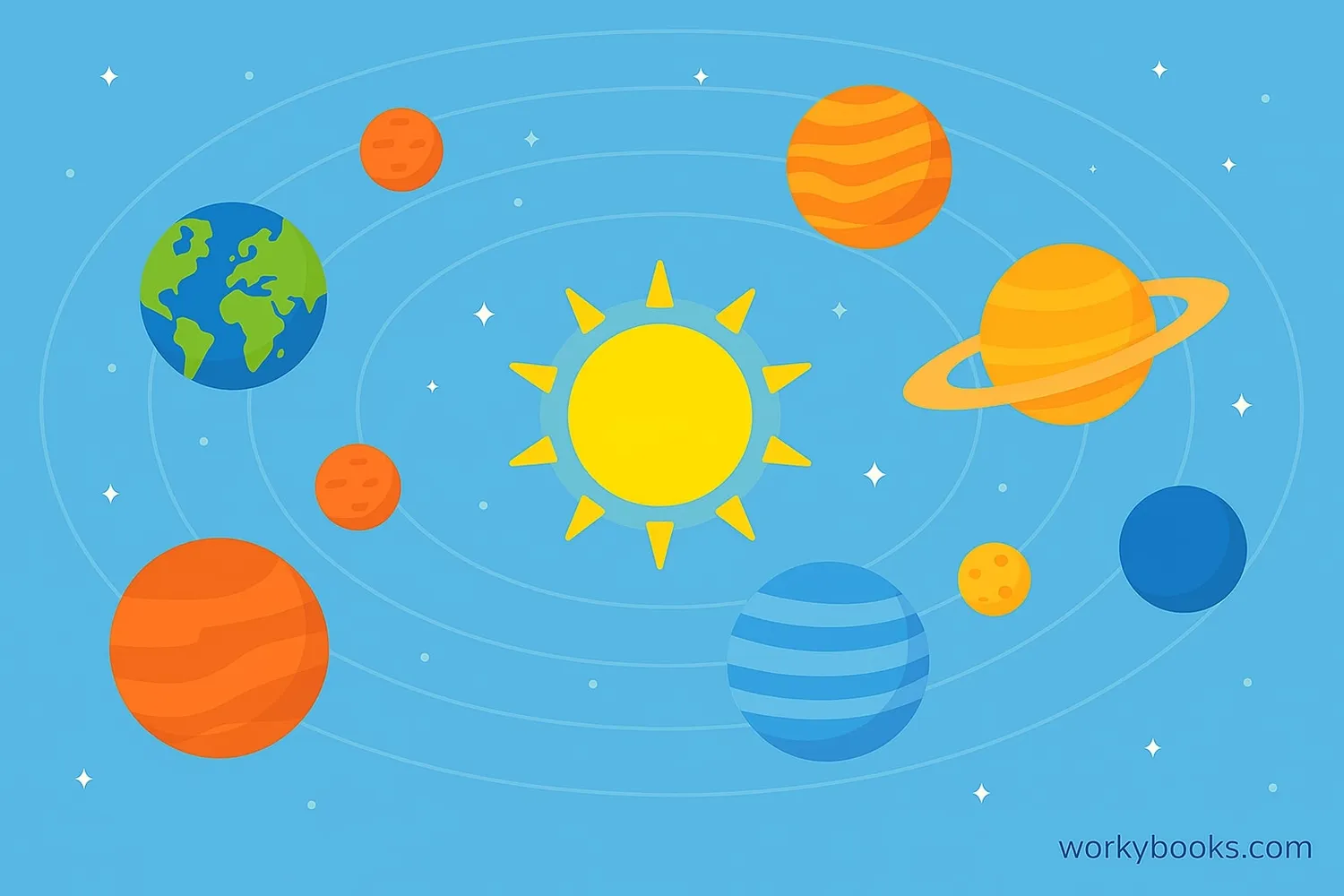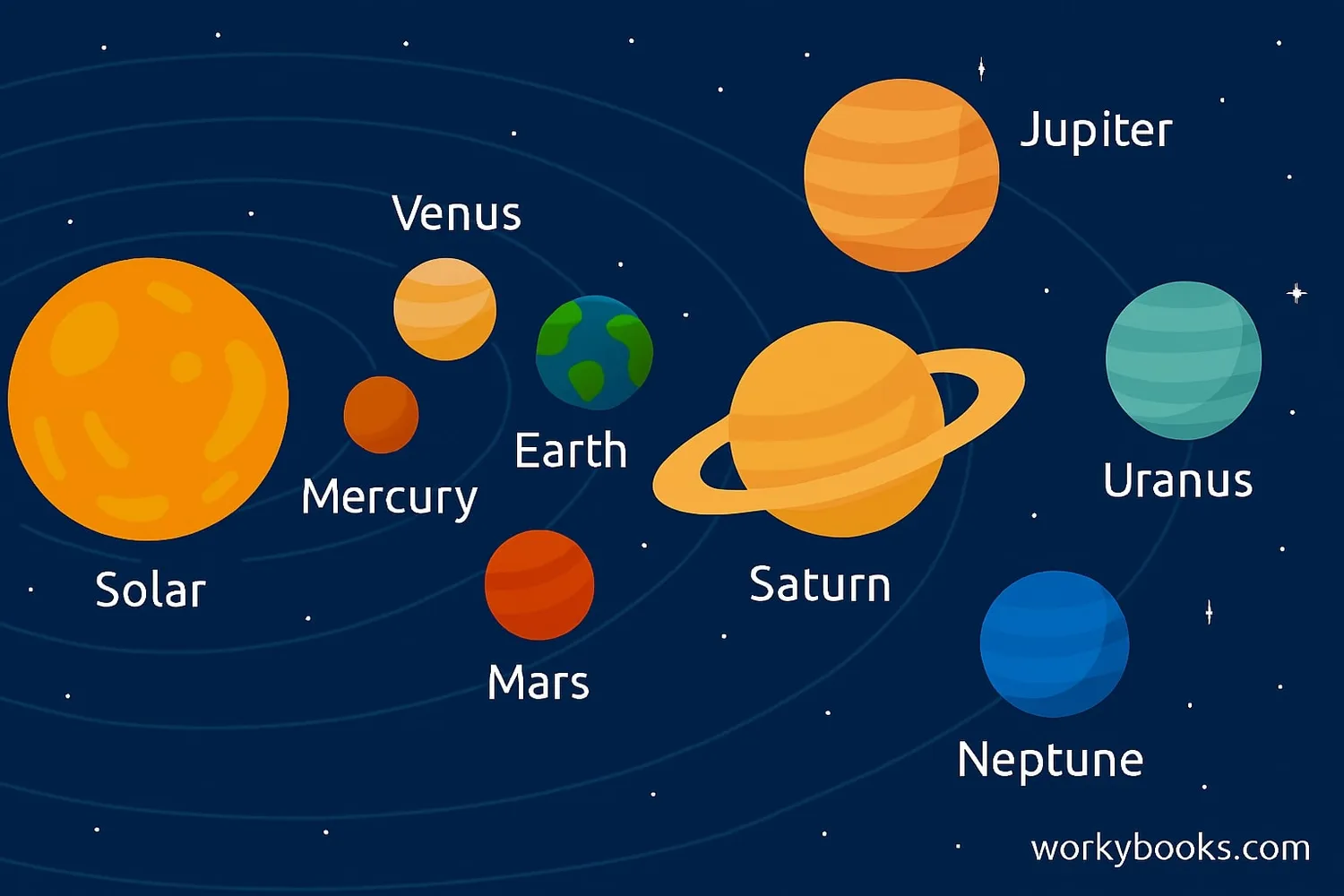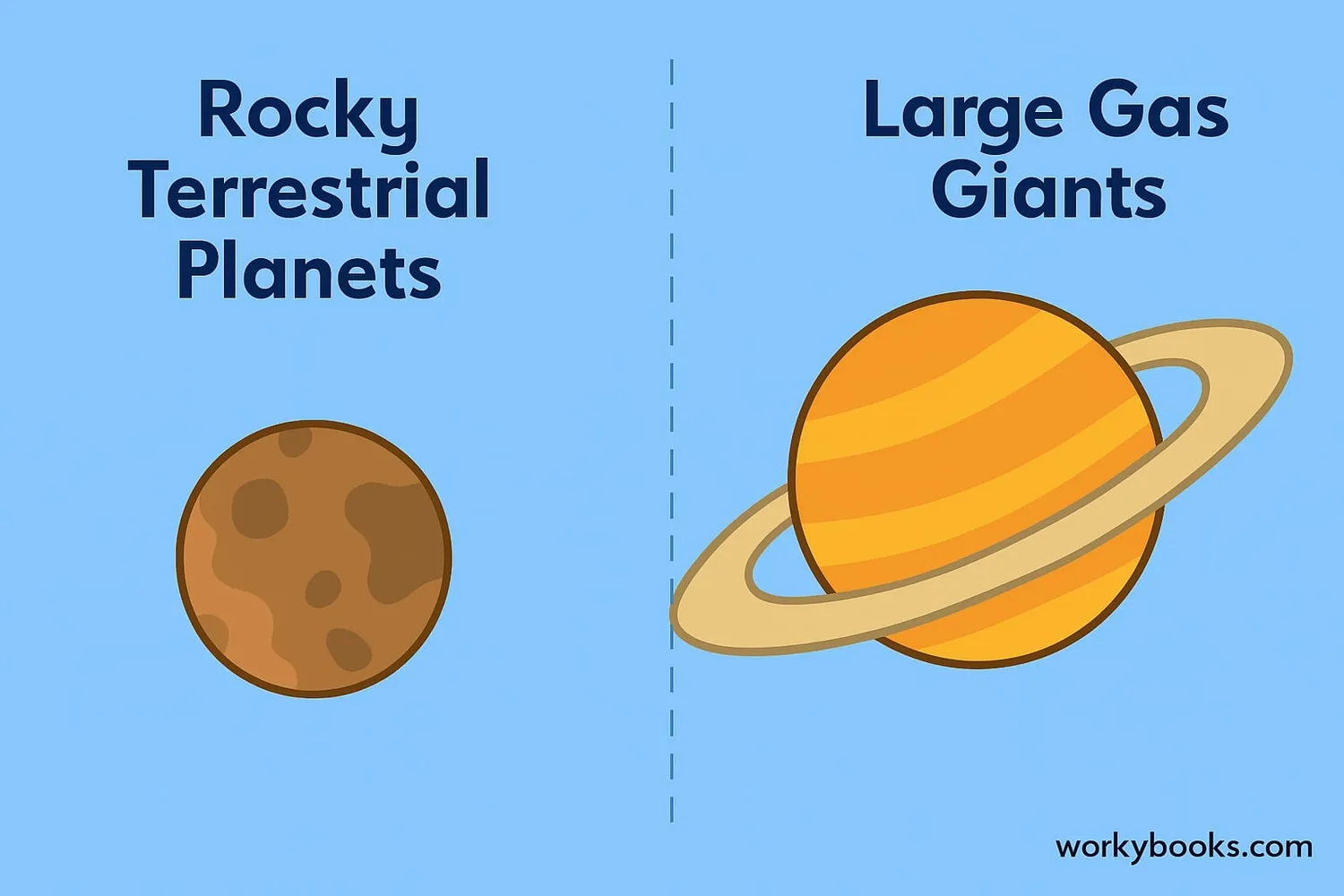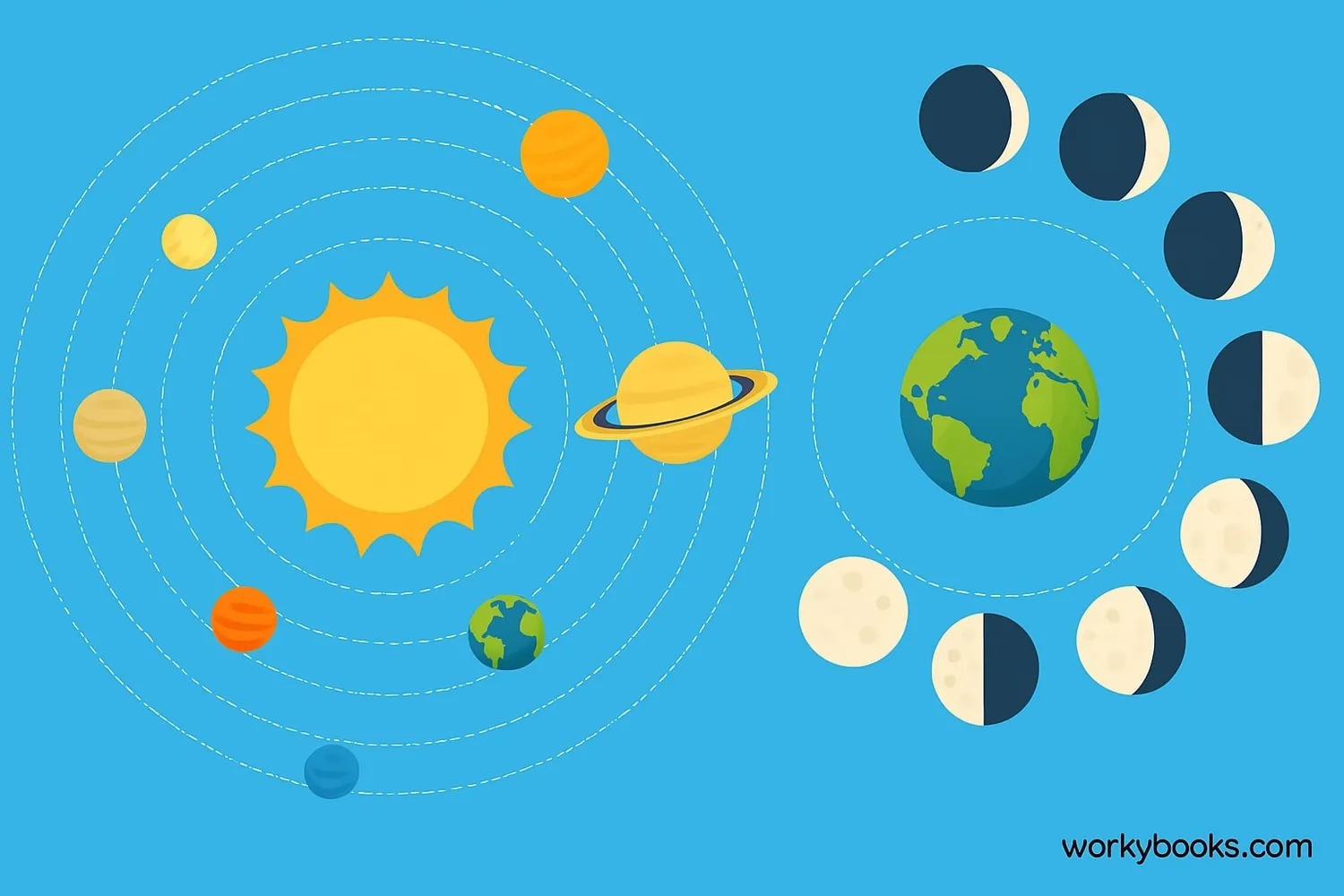Planets - Definition, Examples, Quiz, FAQ, Trivia
Explore the fascinating worlds orbiting our Sun
What are Planets?

Planets are large celestial bodies that orbit around stars. In our solar system, all planets orbit the Sun. Planets don't produce their own light like stars do - they reflect light from the Sun. To be considered a planet, a celestial body must:
Orbit a Star
Travel around a star in a consistent path
Be Round
Have enough gravity to form a spherical shape
Clear its Orbit
Have cleared its orbital path of other objects
There are eight major planets in our solar system: Mercury, Venus, Earth, Mars, Jupiter, Saturn, Uranus, and Neptune. Pluto was reclassified as a dwarf planet in 2006 because it hasn't cleared its orbit of other objects in the Kuiper Belt.
Space Fact!
Planets have been known to ancient civilizations for thousands of years. The word "planet" comes from the Greek word "planētēs" meaning "wanderer" because planets appear to wander across the sky relative to the stars.
Our Solar System

Our solar system consists of the Sun and everything bound to it by gravity - the planets, dwarf planets, moons, asteroids, comets, and other space objects. Here's an overview of our planetary neighbors:
Mercury
Closest to the Sun
- Smallest planet
- No atmosphere
- Extreme temperatures
Venus
Earth's "sister" planet
- Hottest planet
- Thick, toxic atmosphere
- Retrograde rotation
Earth
Our home planet
- Only known life
- Liquid water surface
- One natural satellite
Mars
The Red Planet
- Thin atmosphere
- Two small moons
- Largest volcano in solar system
Jupiter
Largest planet
- Gas giant
- Great Red Spot storm
- 79 known moons
Saturn
Ringed planet
- Spectacular ring system
- 62 confirmed moons
- Least dense planet
Uranus
Ice giant
- Rotates on its side
- Blue-green color
- 27 known moons
Neptune
Windy blue planet
- Farthest from Sun
- Strongest winds
- 14 known moons
Solar System Fact!
It would take more than 1,300 Earths to fill Jupiter's volume, and over 700 Jupiters to fill the Sun!
Types of Planets

Planets in our solar system are classified into different types based on their composition and characteristics:
Terrestrial Planets
Mercury, Venus, Earth, Mars
- Rocky surfaces
- Solid cores
- Thinner atmospheres
Gas Giants
Jupiter, Saturn
- Mostly hydrogen and helium
- No solid surface
- Many moons and rings
Ice Giants
Uranus, Neptune
- Icy compositions
- Thick atmospheres
- Extremely cold
Dwarf Planets
Pluto, Ceres, Eris
- Small planetary bodies
- Orbit the Sun
- Haven't cleared their orbits
Beyond these planets, our solar system contains:
• Asteroids: Rocky objects mostly found in the asteroid belt between Mars and Jupiter
• Comets: Icy bodies that develop tails when near the Sun
• Meteoroids: Small rocky or metallic bodies in space
• Kuiper Belt: A region beyond Neptune with many icy bodies
• Oort Cloud: A distant spherical shell of icy objects surrounding the solar system
Planetary Movements & Events

Planets move in predictable patterns that create fascinating events we can observe from Earth:
Orbit
The path a planet follows around the Sun
Earth's orbit: 365.25 days
Rotation
A planet spinning on its axis
Earth's rotation: 24 hours
Moon Phases
Changing appearance of the Moon
Cycle: 29.5 days
Special events occur when celestial bodies align:
• Eclipse: When one celestial body moves into the shadow of another
- Solar eclipse: Moon passes between Earth and Sun
- Lunar eclipse: Earth passes between Sun and Moon
• Planetary alignment: When planets appear in a line from Earth's perspective
• Meteor shower: When Earth passes through debris left by comets
• Solstice: When the Sun reaches its highest or lowest point in the sky
Sky Watching Tip!
You can see Venus, Mars, Jupiter, and Saturn with the naked eye. Venus is often called the "morning star" or "evening star" because it's so bright!
Planets Quiz
Test your knowledge of planets and our solar system with this quiz!
Frequently Asked Questions
Here are answers to common questions about planets:
Amazing Planet Facts
Discover some incredible facts about our solar system:
Time Travel
A day on Venus is longer than its year! Venus takes 243 Earth days to rotate once but only 225 Earth days to orbit the Sun.
Windy World
Neptune has the strongest winds in the solar system, reaching speeds of 2,100 km/h (1,300 mph) - faster than the speed of sound!
Water Everywhere
Jupiter's moon Europa has twice as much water as all of Earth's oceans combined beneath its icy crust, making it a potential place to find life.
Extreme Temperatures
Mercury has the most extreme temperature range of any planet: 430°C (800°F) during the day to -180°C (-290°F) at night.


